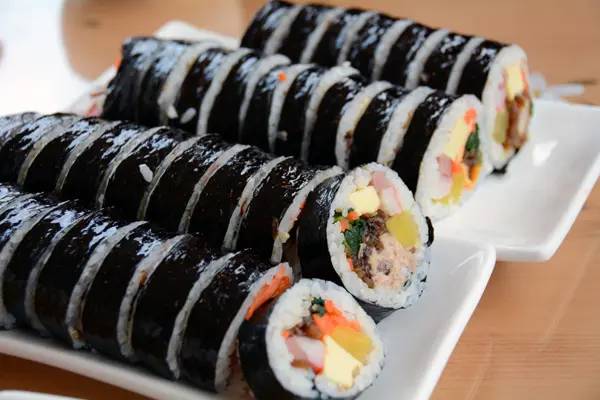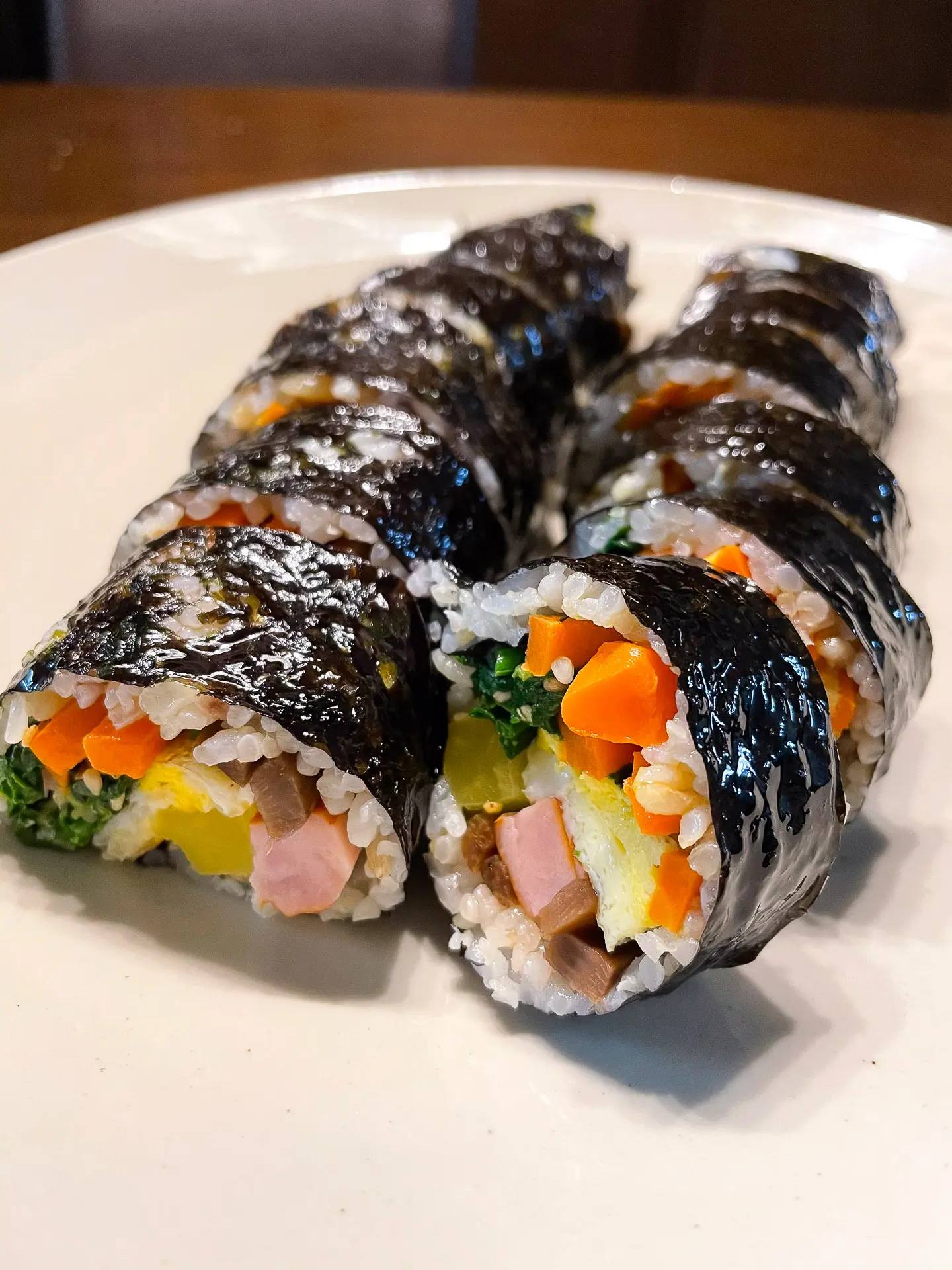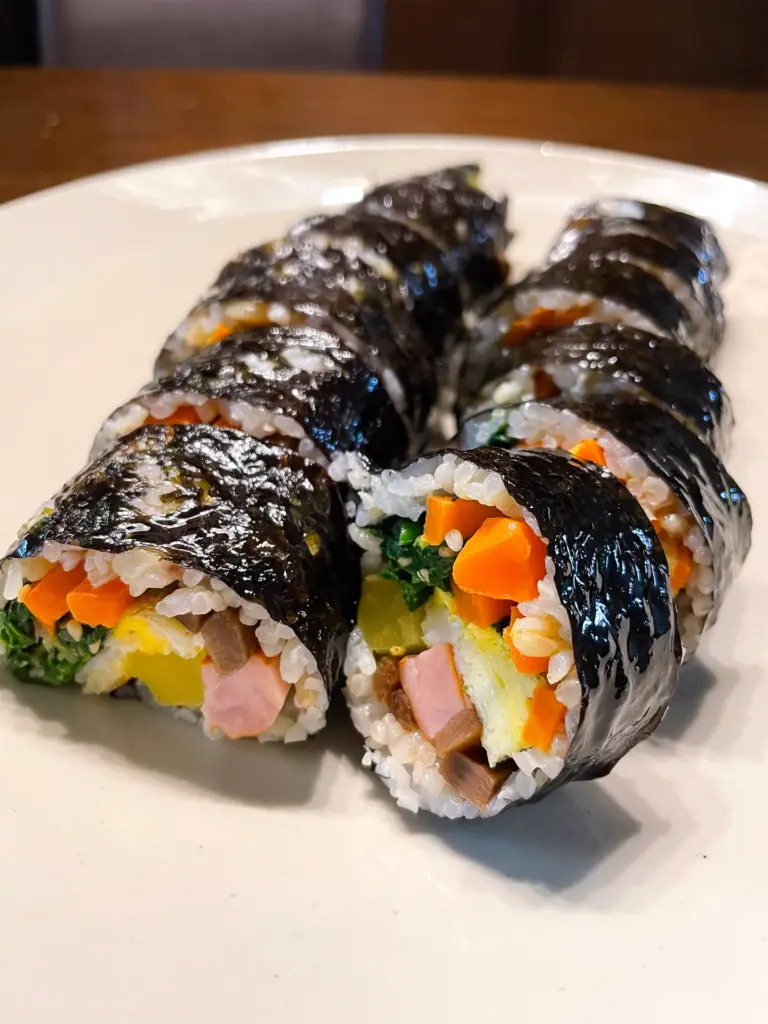
KIMBAP. NOT KOREAN SUSHI.
Many foreigners often refer to kimbap(gimbap 김밥) as “Korean sushi,” but I want to clarify that kimbap is not Korean sushi.
Did kimbap evolve from Japanese norimaki?
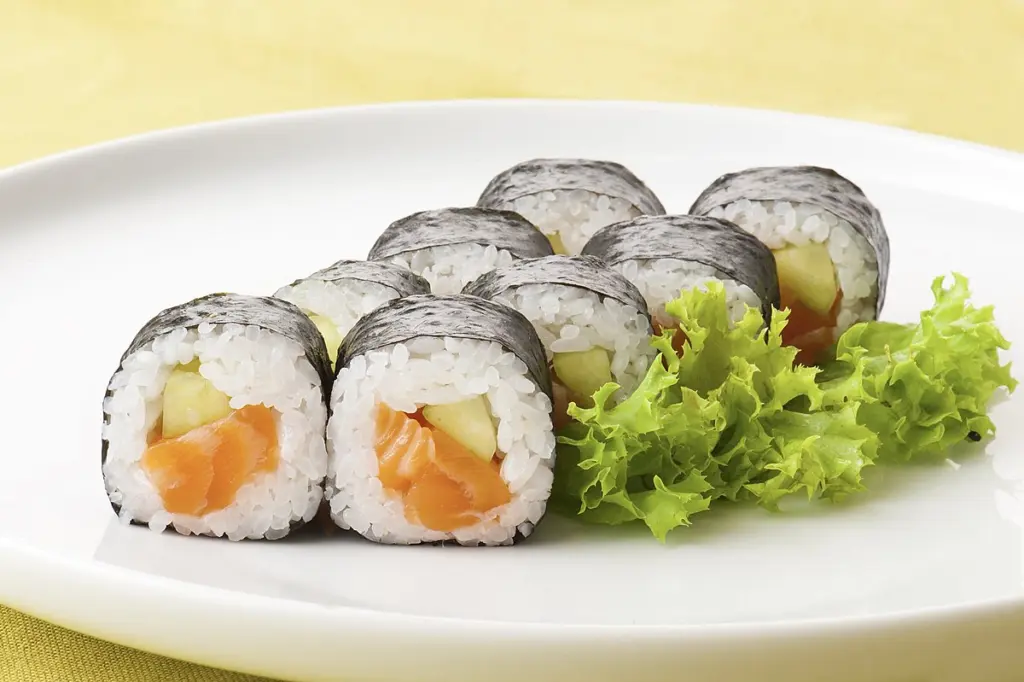
Nowadays, kimbap is often referred to as “Korean sushi”. This is probably because its appearance is similar to norimaki, a type of Japanese sushi roll. While kimbap and Japanese norimaki share many similarities, kimbap has evolved into a distinctly Korean dish. Kimbap is thought to have been influenced by Japanese norimaki, especially futomaki, a type of maki sushi in which the rice and ingredients are rolled into a thick roll with a larger amount of filling. Kimbap shares similarities with futomaki, but there are distinct cultural and ingredient differences. So it’s not Korean sushi at all.
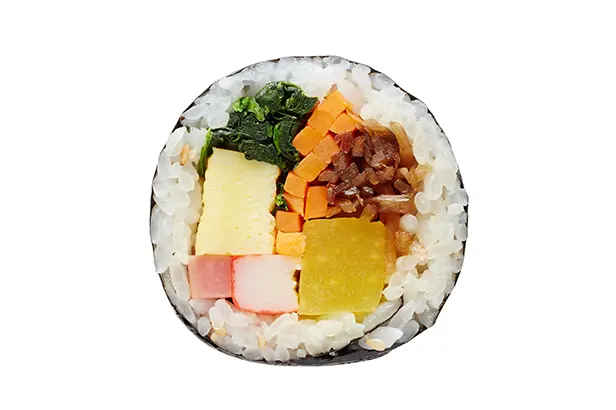
In Korea, kimbap has become a staple for quick meals and a convenient food item with a wide variety of fillings and unique styles. Kimbap is typically filled with ingredients such as vegetables, eggs, and ham, making it perfect for a packed lunch or a simple meal. On the other hand, norimaki in Japan traditionally uses sushi ingredients such as raw fish, eggs and vegetables.
While it’s possible that kimbap was influenced by Japanese norimaki, it was adapted and developed according to Korean tastes and culture, making it a distinctly Korean dish. I’ll explain this in more detail below.
The Differences Between Kimbap and Sushi
Today, I will compare kimbap( and sushi based on five categories: seaweed, rice seasoning, fillings, shape, and how they are eaten.
Seaweed
- Korean Gim (김): Korean seaweed is thin and crisp.
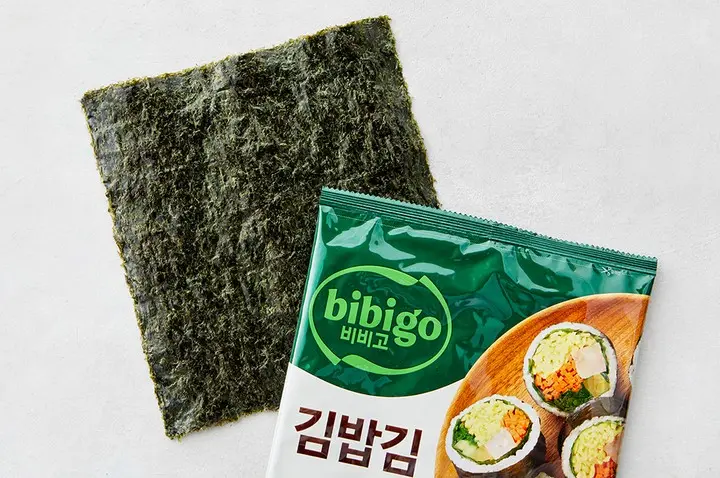
- Sushi Nori : Japanese seaweed is thick and dense.
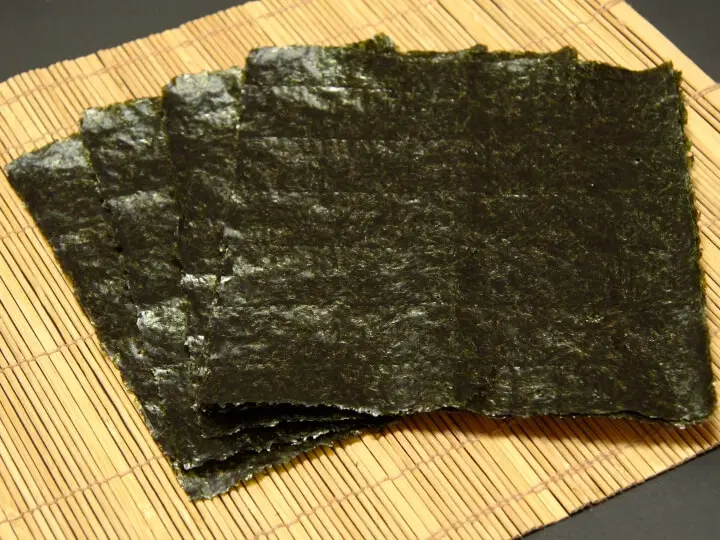
Rice Seasoning
- Kimbap: The rice is seasoned with sesame oil and salt, giving it a savory flavor.
- Sushi: The rice is seasoned with a sweet vinegar mixture made from rice vinegar, mirin, sugar, and kombu dashi. The rice for sushi is moister than the rice for kimbap.
Fillings
- Kimbap: Contains cooked ingredients such as stir-fried spinach, carrots, eggs, and ham. The focus is more on vegetables and eggs rather than meat or seafood.
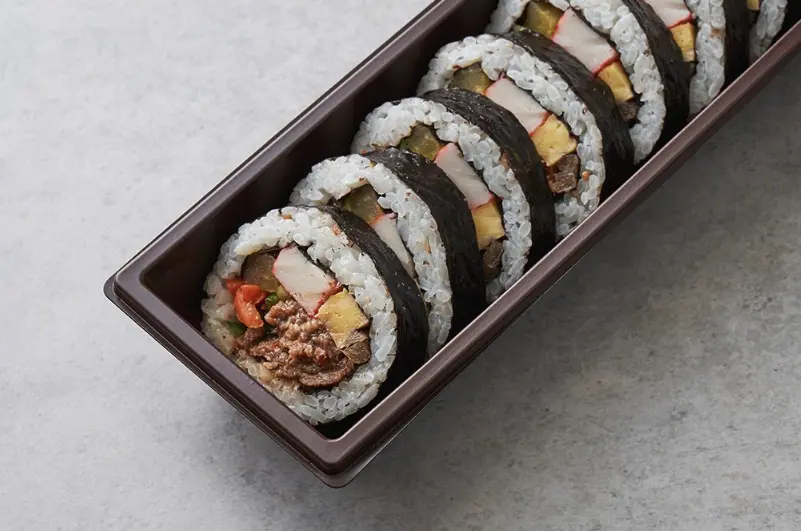
- Sushi: Features fresh raw ingredients, such as sashimi-grade fish, and typically uses seafood. Similar to kimbap, futomaki also contains raw fish like salmon or tuna.
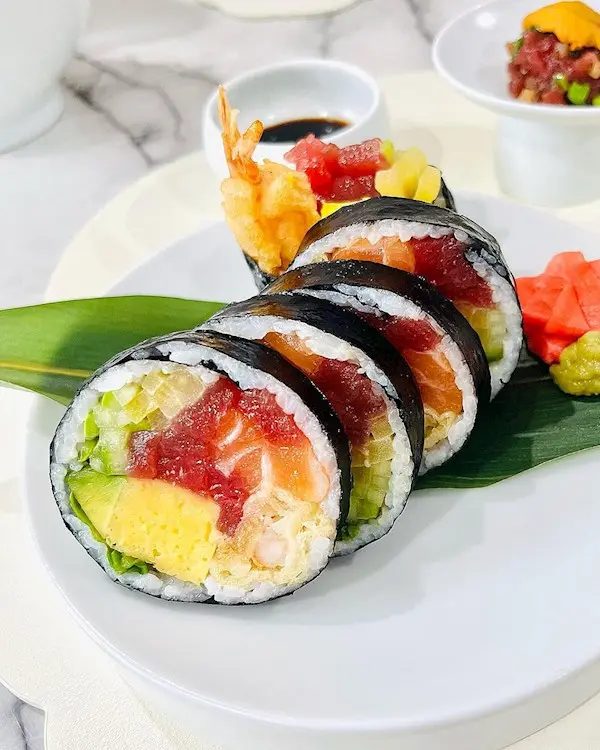
Shape
- Kimbap: Rice is spread on a sheet of seaweed, then filings are added and rolled into a cylindrical shape.
- Sushi: The shape varies. The most common is nigiri sushi, where the fish is placed on top of the rice, while maki sushi, similar to kimbap, is also available in a cylindrical shape.
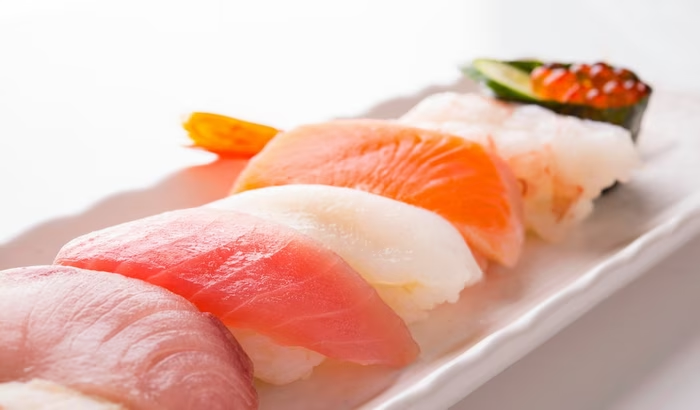
How to Eat?
- Kimbap: Typically cut into bite-sized pieces and eaten without dipping sauce.
- Sushi: It is usually dipped in soy sauce or sometimes eaten with wasabi on top of the fish.
The cultural differences
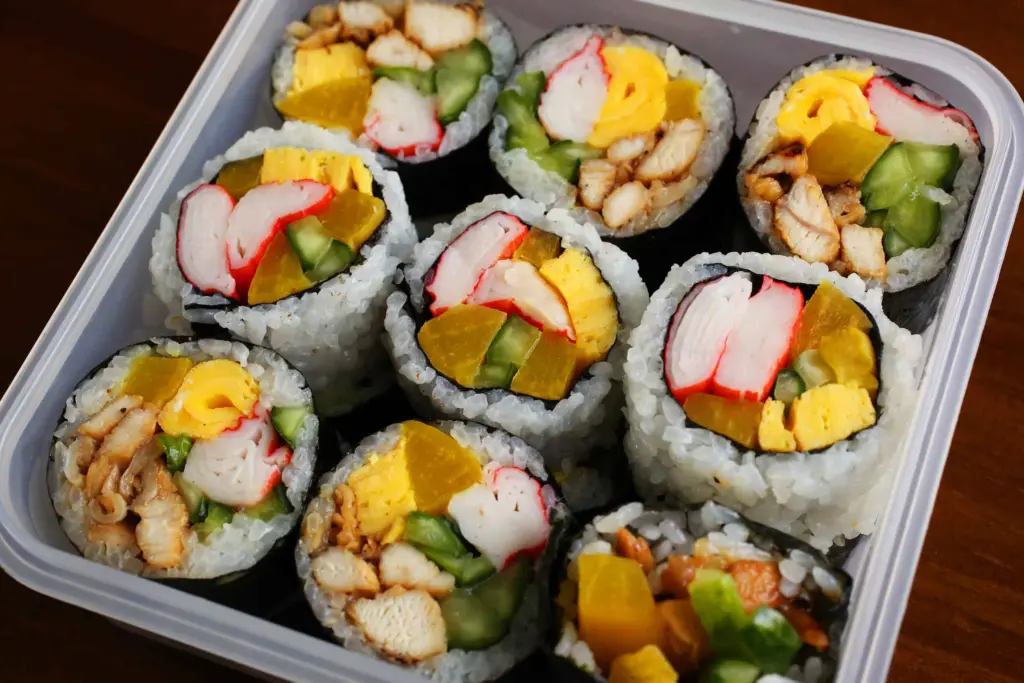
Kimbap is a quick and convenient meal in Korea, often eaten as part of a packed lunch(dosirak lunch box), picnic, or casual gathering. It symbolizes convenience and a culture of sharing, as it is easy to prepare and serve in large quantities.
On the other hand, in Japan, sushi is often associated with special occasions or enjoyed in restaurants. Sushi reflects a more formal dining culture where presentation and quality of ingredients are highly valued.
Which is Healthier, Kimbap? or Sushi?
Kimbap(gimbap) typically consists of rice seasoned with sesame oil and salt, along with a variety of vegetables, eggs, and ham. The vegetables provide vitamins and minerals, making it a nutritious option. However, the addition of processed meats such as ham can increase the sodium content.
Sushi, on the other hand, is made mostly of fish and vegetables. The fish, especially raw fish, provides omega-3 fatty acids, making it a healthy choice. However, the rice often contains sugar, and sushi is usually eaten with soy sauce, which can increase sodium intake.
Healthy Fusion Kimbap Recipes
Here are two healthy kimbap recipes without processed meat. Traditional kimbap involves a somewhat complicated process of blanching and stir-frying vegetables. If you’re looking for a simple yet delicious version, I recommend these two fusion kimbap options: one is mackerel kimchi kimbap, and the other is bibimbap kimbap.
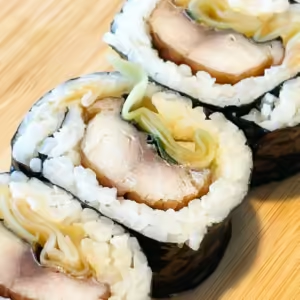
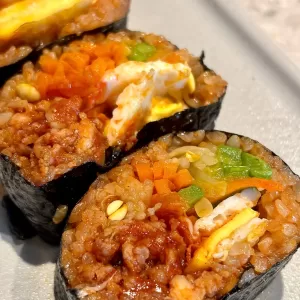
Conclusion: Both are Delicious.
I love both Korean kimbap and Japanese sushi. Kimbap and sushi are each delicious foods with their own unique charm. These dishes carry the culture of their respective countries, which makes them even more meaningful. Today, I hope this was more than just a simple comparison of the words “kimbap” and “sushi,” but an opportunity to explore the depth of both Korean and Japanese cultures.
And if I may have one small wish, I would be truly grateful if people could remember the word kimbap instead of calling it Korean sushi.
